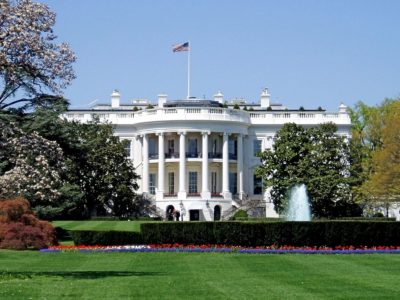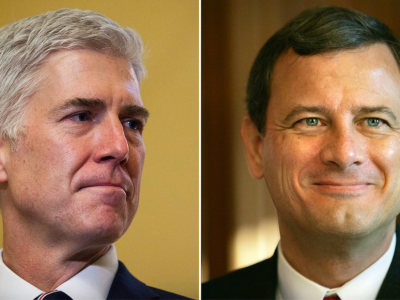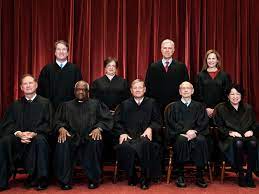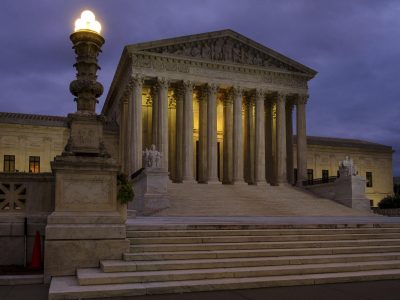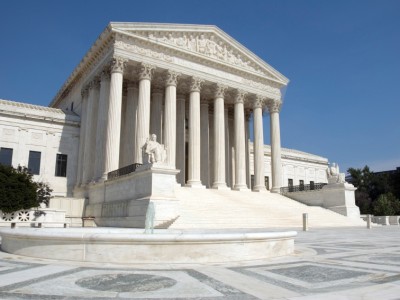statutory interpretation
The Presidency Under Siege
The current Justices are no friends of presidential power.
As recent scholarship has shown, the Supreme Court has been increasingly aggressive in countering exercises of presidential power. From the environmental perspective, West Virginia v. EPA is the most relevant example of the Court’s efforts to cut the presidency down to size. True, the Court purported to be chastising EPA, part of the bureaucracy. Yet …
Continue reading “The Presidency Under Siege”
CONTINUE READINGWhose Major Questions Doctrine?
There are two versions of the doctrine. One of them is more dangerous.
When it struck down Obama’s signature climate regulation in West Virginia v. EPA, the Supreme Court formally adopted the major questions doctrine as a way to synthesize prior anti-regulatory rulings. The major questions doctrine (MQD to insiders) has gotten a lot of attention. One thing that’s been overlooked, however, is that there are two versions …
Continue reading “Whose Major Questions Doctrine?”
CONTINUE READINGA Beautiful Day for Bumblefish?
A California court just ruled that bumblebees are fish. It’s not as crazy as it sounds.
A California appeals court ruled last week that bumblebees are fish and are therefore protected by the California Endangered Species Act (CESA). That may sound ridiculous, but there’s actually a convoluted legal argument to support the court. That argument does justify giving the CESA some extra coverage beyond what we would ordinarily classify as fish. …
Continue reading “A Beautiful Day for Bumblefish?”
CONTINUE READINGMore on How the Vaccine Mandate Cases May Impact Climate Policy
How much is the Court likely to prune back EPA’s powers?
In a Friday post, I sketched some thoughts about how the Supreme Court’s vaccine mandate rulings might impact EPA’s power to control carbon emissions. I think it’s worth unpacking both the Court’s opinions a little more and the issues at stake in a pending climate change case, West Virginia v. EPA. The Court ruled in …
Continue reading “More on How the Vaccine Mandate Cases May Impact Climate Policy”
CONTINUE READINGAnother Worrisome Signal from the Supreme Court
Phrases that should frighten environmentalists: “Shadow docket ” “Major questions doctrine”
Last Thursday, the Supreme Court struck down the CDC eviction moratorium in the Alabama Association of Realtors case. The case may seem far removed from environmental law, but it has some troubling implications for future EPA regulatory initiatives. The process used by the Supreme Court to intervene is as significant as the ruling itself. This …
Continue reading “Another Worrisome Signal from the Supreme Court”
CONTINUE READINGGetting the Lead Out
The Ninth Circuit tells EPA to determine safe levels for lead based solely on science.
Lead can cause neurological damage to young children and developing fetuses. The only really safe level is zero. Because poor children are the most likely to be exposed to this hazard, this is also a major environmental justice issue. The Trump EPA took the position that it could set a hazard level higher than zero …
Continue reading “Getting the Lead Out”
CONTINUE READINGLiberal Judges Embrace Textualism
Why are these judges suddenly so enthusiastic about Justice Scalia’s approach to reading statutes?
Two of Trump’s major regulatory efforts were recently thrown out by the D.C. Circuit. The liberal judges who wrote the opinions latched onto a conservative theory called textualism, which was most prominently advocated by Justice Antonin Scalia. While judges in an earlier era tried to interpret Congress’s intent in writing a law, textualists focus solely …
Continue reading “Liberal Judges Embrace Textualism”
CONTINUE READINGRethinking Presidential Administration
Giving the President more control of regulation has been a good thing — up to a point.
Conservatives love to complain about faceless bureaucrats, but blaming bureaucrats for regulations is hopelessly out of date. When Elena Kagan was a professor, she wrote an article called “Presidential Administration.” The article applauded her former boss Bill Clinton for seizing greater control of the regulatory process away from agencies. That trend has accelerated to the …
Continue reading “Rethinking Presidential Administration”
CONTINUE READINGTaming Textualism: A Guide for Environmental Lawyers
How to Argue Cases to Conservative Judges
Textualism is the dominant method of interpreting statutes among conservative judges. It purports to base interpretation on the “ordinary meaning” of the statutory language. This approach ignores traditional tools of statutory interpretation like considering what was actually said in Congress. Ignoring what Congress actually intended seems odd to me. Still, lawyers have to make arguments …
Continue reading “Taming Textualism: A Guide for Environmental Lawyers”
CONTINUE READINGFancy Dancing on the Appalachian Trail
How to Use Textualism to Evade Statutory Texts
The Supreme Court’s decision in Cowpasture case allows gas pipelines to cross the Appalachian trial. The ruling didn’t get much attention because of its timing. It came down the same day as Bostock, which outlawed employment discrimination against gays and transsexuals. Bostock featured a big battle over the meaning of textualism. But Cowpasture was also …
Continue reading “Fancy Dancing on the Appalachian Trail”
CONTINUE READING



